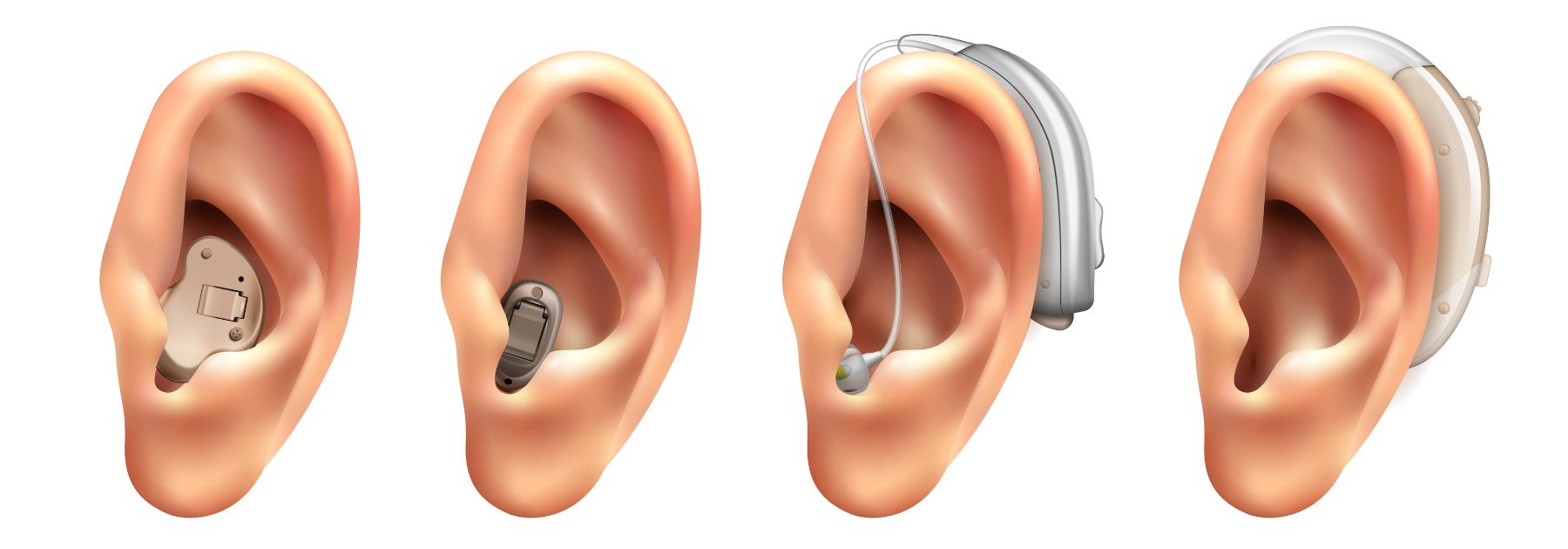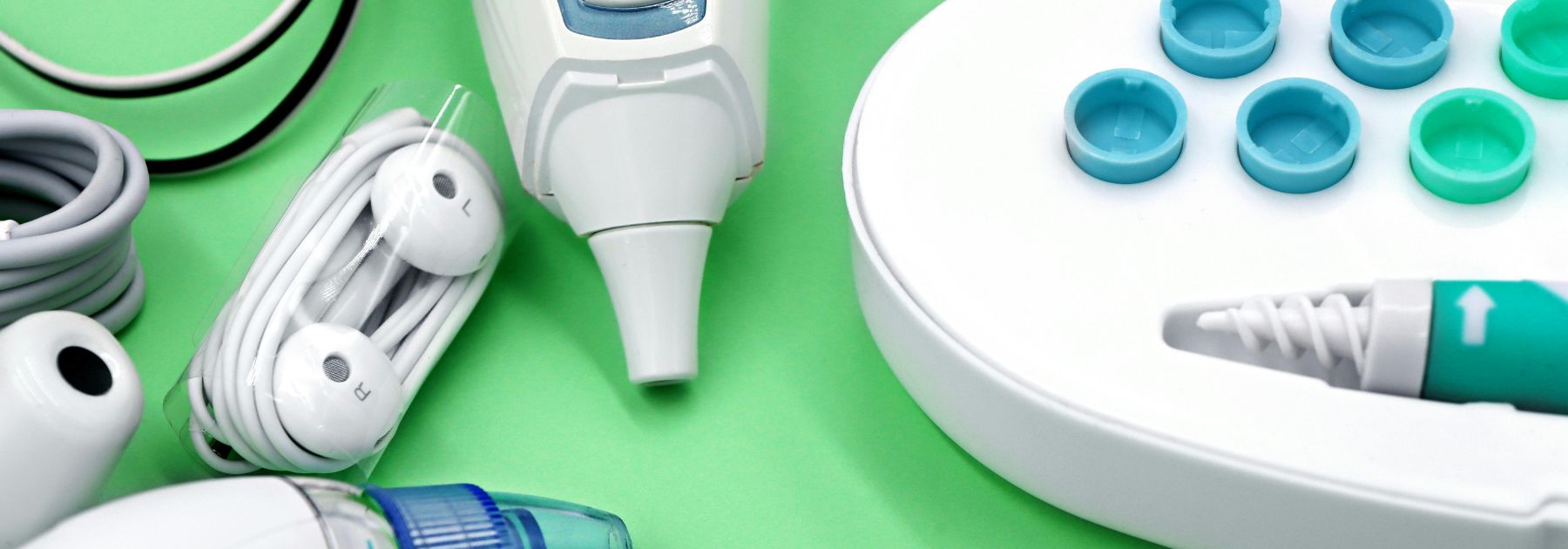In-Ear Hearing Aids and Earwax: What You Need to Know
In-ear hearing aids are a discreet and effective option for those experiencing hearing loss. Their compact design, which sits snugly within the ear canal, offers users both clarity and confidence. However, while they are celebrated for their convenience and aesthetic appeal, in-ear hearing aids can also come with an often-overlooked downside—earwax build-up.
At Bourne End Pharmacy, we not only understand how important it is to hear clearly but also how earwax can interfere with both your hearing and the performance of your hearing aids. In this blog, we’ll explore the connection between in-ear hearing aids and earwax issues—and how we can help you manage both.
What Are In-Ear Hearing Aids?
In-ear hearing aids, also known as ITE hearing aids (In-The-Ear), are custom-moulded to fit inside your ear canal. These devices are compact yet powerful, offering excellent sound quality in a nearly invisible design. Unlike behind-the-ear models, they don’t rest on the outer ear or have visible tubing. This gives them a sleek, almost invisible appearance.
They come in a few different types, including:
-
–> ITE (In-The-Ear) – fills the outer portion of the ear
-
–> ITC (In-The-Canal) – smaller, sits partly in the ear canal
-
–> CIC (Completely-In-Canal) – barely visible and fits deep within the canal
-
–> IIC (Invisible-In-Canal) – the most discreet option, almost entirely hidden
Each style varies slightly in visibility, power, and features, which can help determine which is best for your hearing needs and lifestyle.

How Do In-Ear Hearing Aids Work?
Just like other hearing aids, in-ear models consist of a microphone, amplifier, and speaker. Sound is picked up by the microphone, processed and amplified, then delivered directly into the ear via the speaker.
Because in-ear hearing aids sit closer to the eardrum than other styles, they can offer:
-
–> Natural sound quality
-
–> Better use of the ear’s anatomy for directionality
-
–> Reduced wind noise
The Link Between In-Ear Hearing Aids and Earwax Build-Up
Earwax—also known as cerumen—is the body’s natural way of protecting and cleaning the ears. It traps dust, debris, and bacteria, preventing them from entering deeper into the ear canal. However, when in-ear hearing aids are worn regularly, they can interfere with this natural process.
Here’s how:
1. Blocked Earwax Migration
Normally, earwax moves gradually out of the ear canal on its own. But in-ear hearing aids create a physical barrier, preventing this natural movement and causing wax to accumulate inside.
2. Stimulated Wax Production
The presence of a hearing aid inside the ear can stimulate the ceruminous glands, leading to increased wax production. This is the body’s way of responding to the “foreign object” inside the ear.
3. Compacted Wax
Inserting and removing your hearing aids daily can push wax deeper into the canal. Over time, this compaction can lead to a blocked ear, hearing aid malfunction, and even discomfort or earache.
Signs Your In-Ear Hearing Aids Are Causing Wax Build-Up
If you wear in-ear hearing aids, it’s important to monitor for signs of excessive earwax. These may include:
-
-> Muffled or reduced hearing
-
-> Whistling or feedback from your hearing aid
-
-> Discomfort or a feeling of fullness in the ear
-
-> Itching or irritation
-
-> Hearing aid malfunction or lower performance
Ignoring these symptoms can lead to infection, prolonged discomfort, and frequent maintenance issues with your device.
How Bourne End Pharmacy Can Help
At Bourne End Pharmacy, we offer professional earwax removal services to support patients using in-ear hearing aids. Our team is trained in safe and effective techniques such as microsuction, the gold standard for earwax removal.
✅ Quick and Safe Appointments
We offer face-to-face consultations with trained healthcare professionals in a clean and private setting.
✅ Microsuction Technique
Unlike traditional ear syringing, microsuction uses gentle suction and a fine medical-grade instrument to remove wax without water—ideal for hearing aid users.
✅ Local and Convenient
We are based in Bourne End and serve surrounding areas including Marlow, Beaconsfield, and Maidenhead. No need to wait weeks for a GP referral.
✅ Follow-Up Advice
We don’t just remove wax—we give personalised advice on preventing build-up and maintaining your hearing aids.
How Often Should You Get Your Ears Checked?
If you wear in-ear hearing aids, we recommend having your ears checked every 3 to 6 months, even if you’re not experiencing symptoms. This helps keep your devices working efficiently and prevents discomfort or hearing loss caused by compacted wax.
Tips for Managing Earwax with In-Ear Hearing Aids
In addition to professional wax removal, you can also reduce build-up at home by
-
-> Cleaning your hearing aids daily using the manufacturer’s tools
-
-> Avoiding cotton buds, which can push wax further in
-
-> Using olive oil-based ear drops occasionally (but only if advised by a professional)
-
-> Attending regular ear health checks, especially if you’re prone to wax build-up
Book Your Earwax Removal Appointment Today
If you wear in-ear hearing aids and are experiencing muffled hearing or discomfort, don’t wait for it to get worse. Book an earwax removal appointment at Bourne End Pharmacy today and let our trained team help you hear clearly again.
We’re here to support your hearing journey every step of the way.
This blog was written on behalf of Bourne End Pharmacy by Pharmacy Mentor.


